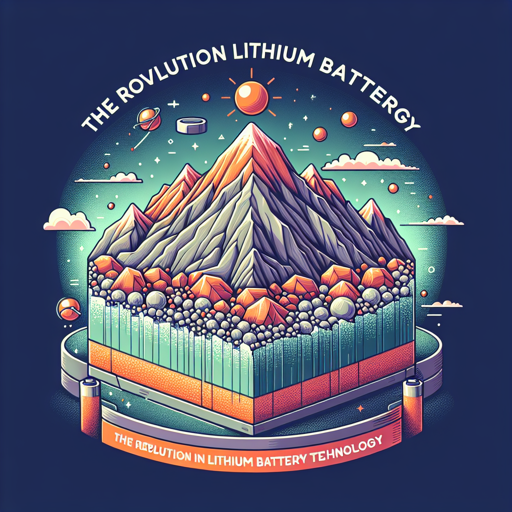Unleashing the Power of Lithium: The Battery Revolution
Exploring the pivotal role of lithium in the advancement of battery technology and its global impacts.

Introduction
The world of minerals and their applications is indeed fascinating. Among these minerals, lithium, a soft, silver-white metal, has been causing a significant stir. Known primarily for its use in lithium batteries, this element is powering a global revolution in energy storage and transportation.
The Lithium Advantage
Lithium-ion batteries have several advantages that have positioned them at the forefront of the energy storage revolution. They are lightweight, have a high energy density, and can be recharged hundreds of times without significant capacity loss.
Lithium’s light weight and ability to retain energy make it a key candidate for use in portable electronics and electric vehicles. Its use in these sectors is expected to grow, with demand for electric vehicles and renewable energy storage solutions on the rise.
Lithium Mining
The lithium used in batteries is primarily extracted from hard rock mines or brine deposits. The latter, found in high-altitude salt flats, are the most cost-effective sources of lithium. These flats, or “salars,” are pumped and the lithium-rich brine is left to evaporate in the sun. This process leaves behind lithium carbonate, which is then processed into a form suitable for battery manufacture.
Mining lithium has its own challenges. It involves the use of significant amounts of water, which can cause environmental issues, particularly in water-scarce regions. Furthermore, the extraction process is energy-intensive.
Quote
As noted by Dr. John Goodenough, the Nobel laureate who invented the lithium-ion battery:
“The lithium-ion battery has enabled the mobile world as we know it, and the potential for the future is huge.”
Lithium Battery Technology: A Comparative Analysis
| Battery Type | Energy Density (Wh/kg) | Lifespan (charge cycles) | Cost ($/kWh) |
|---|---|---|---|
| Lead Acid | 40-50 | 500-800 | 50-150 |
| NiMH | 60-120 | 500-1000 | 200-300 |
| Lithium-ion | 150-200 | 1000-2000 | 100-200 |
As demonstrated in the table above, lithium-ion batteries outperform other common battery types in terms of energy density and lifespan, making them the preferred choice for many applications.
External Reference
To learn more about lithium mining and its environmental impacts, check out this resource from The Guardian.
Conclusion
The lithium battery revolution is transforming the way we store and use energy. From powering our smartphones to driving the growth of electric vehicles, lithium’s role cannot be overstated. However, the environmental impacts associated with lithium mining underline the importance of responsible sourcing and recycling strategies. As we continue to harness lithium’s potential, it’s crucial that we also mitigate the environmental implications of its use. The future of our energy landscape will depend on striking this balance.